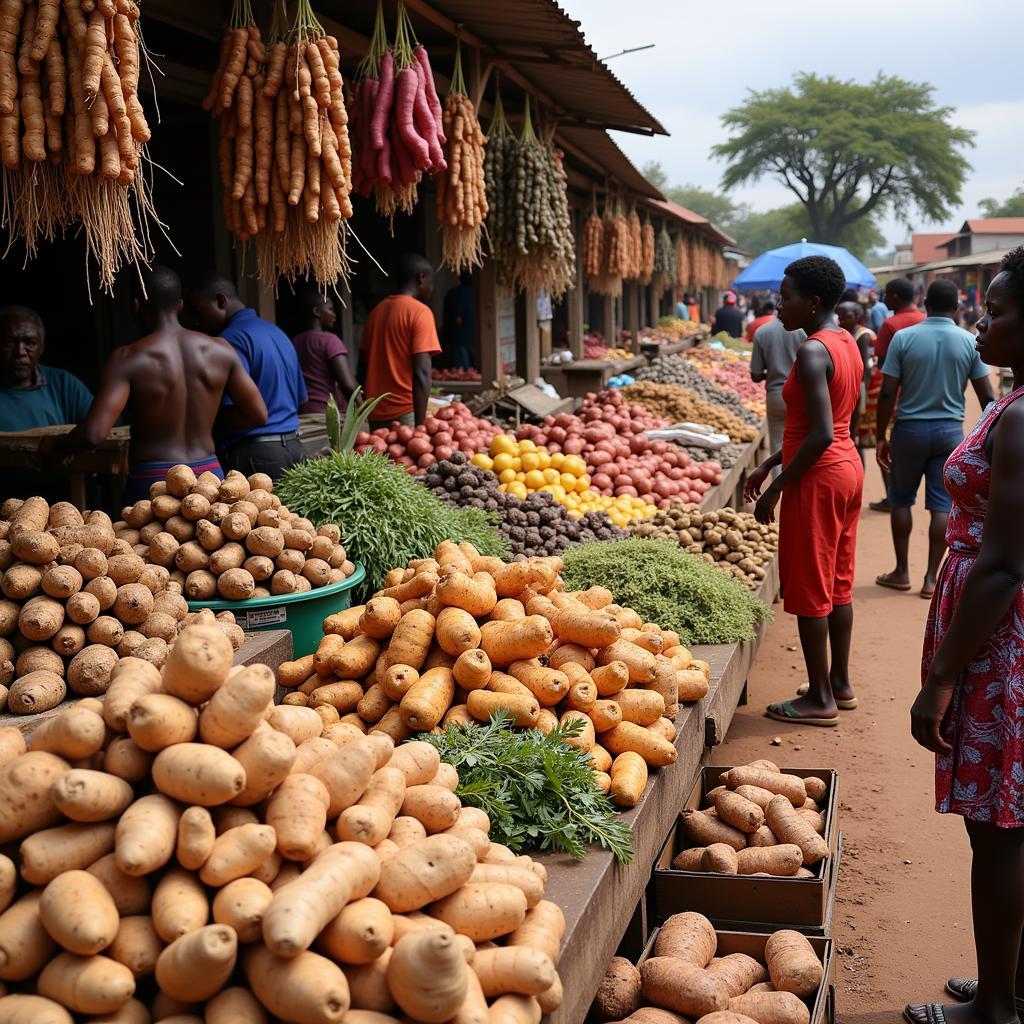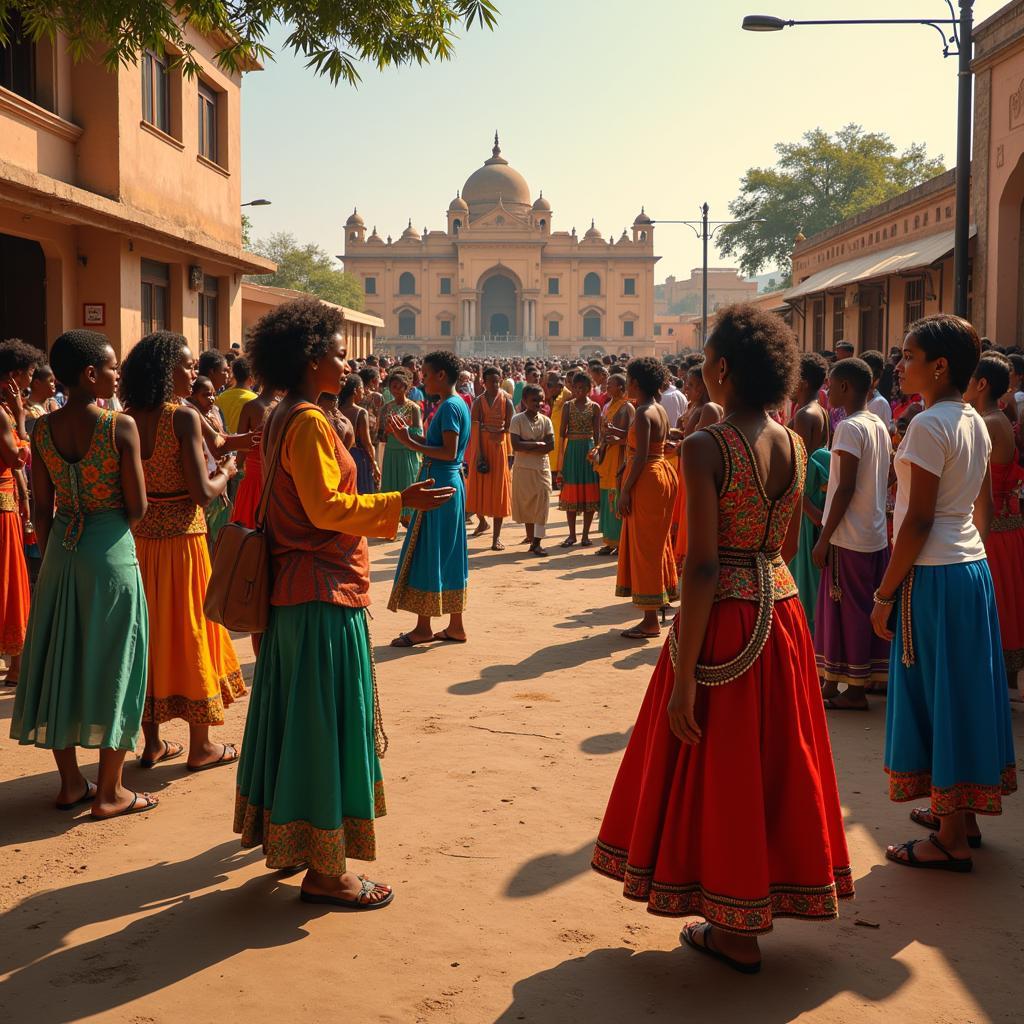Unveiling the Secrets of the African Ghost Crab
The African Ghost Crab, also known as Ocypode cursor, is a fascinating creature that inhabits the sandy beaches of Africa’s coastline. These elusive crustaceans, with their spectral white shells and swift movements, play a vital role in the coastal ecosystem. This article delves into the captivating world of the African ghost crab, exploring its unique characteristics, behaviors, and ecological significance.
Habitat and Distribution of the African Ghost Crab
African ghost crabs carve out their existence along the sandy shores of the eastern Atlantic Ocean, stretching from southern Portugal down to South Africa, including the islands of Cape Verde and the Canary Islands. They prefer beaches with loose, dry sand where they can easily burrow and construct their intricate tunnel systems. These burrows offer protection from predators, harsh weather conditions, and extreme temperatures.
These crabs are nocturnal, emerging from their sandy hideaways under the cover of darkness to forage for food. During the day, they remain hidden within their burrows, conserving energy and avoiding the intense heat of the African sun. Their ghostly white shells help them blend seamlessly into the pale sand, providing excellent camouflage against predators like seabirds and larger crabs.
The Diet and Feeding Habits of Ocypode cursor
African ghost crabs are opportunistic omnivores, consuming a wide variety of organic matter found on the beach. Their diet consists primarily of small invertebrates, such as insects, mole crabs, and other crustaceans. They also scavenge on dead animals and plant material washed ashore by the tides. Their feeding activities contribute to the nutrient cycling within the beach ecosystem.
The crabs use their powerful claws to capture and manipulate their food. They have specialized mouthparts designed for crushing and grinding their meals. Their keen sense of smell helps them locate food sources, even buried beneath the sand.
The Life Cycle and Reproduction of the African Ghost Crab
The life cycle of the African ghost crab, like many other crustaceans, begins in the ocean. After mating, the female crab carries her eggs attached to her abdomen until they hatch. The larvae are released into the ocean, where they undergo several developmental stages as planktonic organisms. These larval stages are crucial for dispersal, allowing the crabs to colonize new beaches.
Once the larvae have developed into juvenile crabs, they return to the shore and begin their terrestrial life. They dig their burrows and continue to grow and molt their shells periodically until they reach adulthood.
Conservation Status and Threats to the African Ghost Crab
While the African ghost crab is not currently listed as endangered, it faces various threats to its survival. Habitat loss due to coastal development, pollution, and human disturbance are major concerns. Increased tourism and recreational activities on beaches can disrupt their burrowing and foraging behavior, impacting their ability to survive and reproduce.
“Protecting the delicate balance of coastal ecosystems is vital for the survival of species like the African ghost crab,” says Dr. Khadija Mwamba, a marine biologist specializing in coastal ecology at the University of Dar es Salaam. “Sustainable coastal management practices are essential for ensuring the long-term health of these fragile environments.”
Conclusion: Protecting the Ghostly Guardians of the Shore
The African ghost crab, Ocypode cursor, is an integral part of the African coastal ecosystem. These intriguing creatures, with their unique adaptations and behaviors, play a crucial role in nutrient cycling and maintaining the delicate balance of life on the beach. Protecting their habitat and mitigating threats to their survival is essential for preserving the biodiversity of Africa’s coastlines. Further research and conservation efforts are needed to ensure the future of these ghostly guardians of the shore.
FAQ
- What does an African ghost crab eat? They are opportunistic omnivores, eating invertebrates, dead animals, and plant matter.
- Where do African ghost crabs live? They live on sandy beaches along the eastern Atlantic coast of Africa.
- Are African ghost crabs endangered? While not currently endangered, they face threats from habitat loss and human disturbance.
- Why are they called ghost crabs? Their pale shells give them a ghostly appearance, especially at night.
- How do African ghost crabs reproduce? The female carries eggs until they hatch, releasing larvae into the ocean.
- What are the predators of the African ghost crab? Seabirds and larger crabs are their primary predators.
- How do African ghost crabs contribute to the ecosystem? They contribute to nutrient cycling through their feeding activities.
Are you curious about other fascinating creatures inhabiting Africa’s diverse ecosystems? Explore our articles on the African elephant and the Nile crocodile!
Need assistance? Contact us at +255768904061, kaka.mag@gmail.com, or visit us at Mbarali DC Mawindi, Kangaga, Tanzania. Our customer support team is available 24/7.


